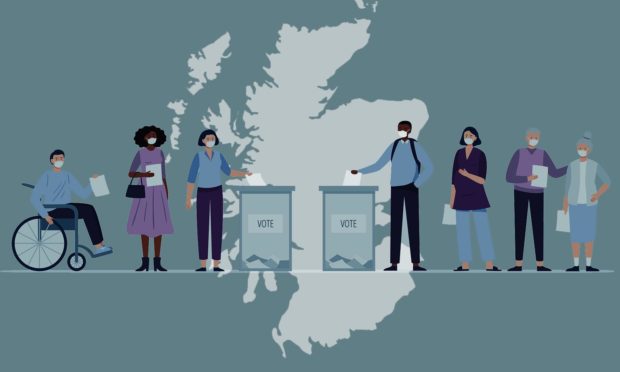In addition to the standard types of polling questions we use, as part of our extensive election research for this publication, we asked more than 2,000 Scots to tell us, in their own words, their most important election issue and why.
Issues that relate to Scotland’s recovery from the toll of the pandemic were those at the forefront of people’s minds.
Although the constitutional question remains important, Scotland’s economy and jobs were more than twice as likely as independence to be mentioned by respondents as top election issues.
The public’s other top election concerns also relate to the clear harms associated with lockdown.
Education and the future for children after a year of school closures, mental health concerns exacerbated by lockdown, a stretched NHS and levels of poverty were top of the public’s minds.
This clear message from the public – the need for policies to address these social and economic recovery issues as the country emerges from lockdown – has not escaped the political parties, with the theme dominating the initial leaders’ debate last week.
A “pandemic recovery” election theme should suit the SNP – our polling shows two-thirds of the public rate the Scottish Government as having handled the pandemic “well” thus far – while less than a third are willing to say the same for the performance of the UK Government in Westminster.
A significant challenge from the opposition parties on these issues about the path out of the pandemic for Scotland will therefore be required if they are to make a dent in the SNP’s current poll standings – which indicate a parliamentary majority.
There does exist some evidence however in our data that there is some room for manoeuvre for other parties on key issues.
While the SNP are more trusted than not when the public is asked about the party in relation to jobs, health and education, voters trust Labour, the Lib Dems, the Greens and the Conservatives more on those issues than the number that currently intend to vote for those parties.
If we accept that the public believes this to be the “pandemic recovery” election, the SNP would be wise therefore to avoid being overly drawn by unionist opposition into an extended constitutional debate or having an undue focus on the timing or priority of a second independence referendum – something Conservative leader Douglas Ross set out to do in during the first debate.
Given there’s only a very limited threat from Salmond’s pro-independence Alba Party in terms of impacting the SNP’s seat potential, there are only downsides at play should Nicola Sturgeon give too much attention to the independence question and not seem focused on the primary task in the public’s mind.
With just 36% of Scots in our recent polling believing that an SNP majority in this election would be a sufficient mandate for a second referendum (versus 46% saying that it would not be), this election is not being viewed widely as a referendum on independence, but rather votes are clearly up for grabs for the parties that convince the public they are now best placed to power Scotland’s post-pandemic recovery.










